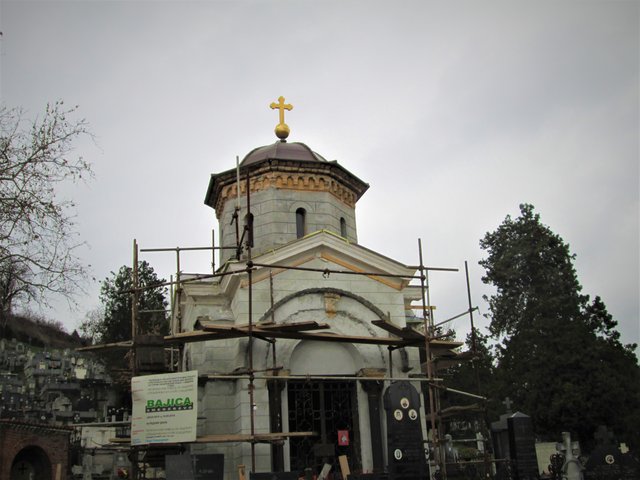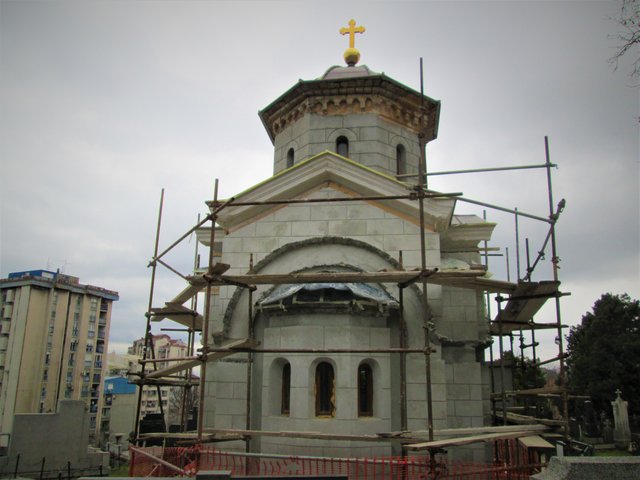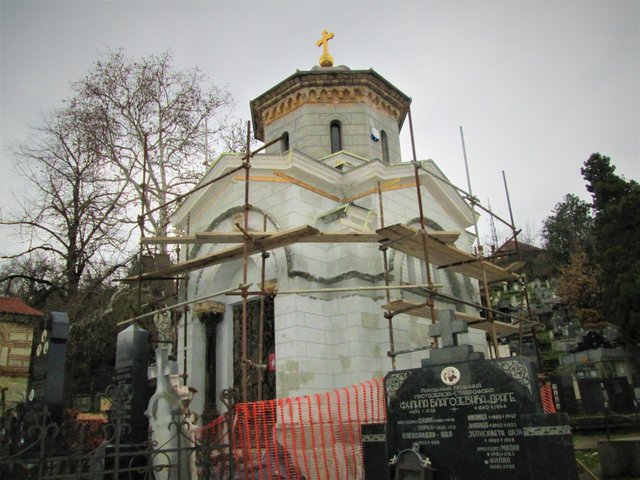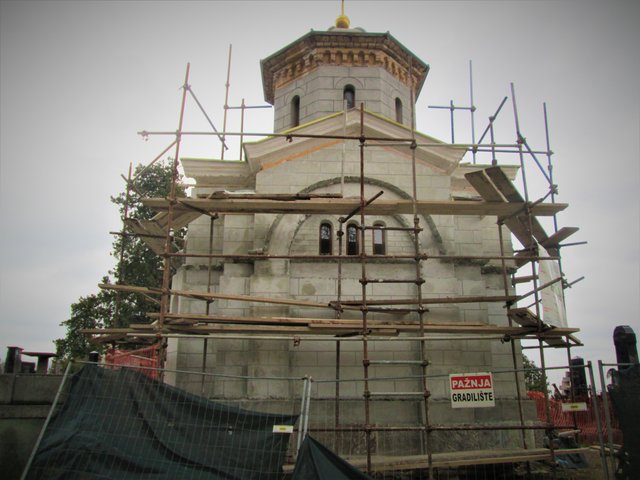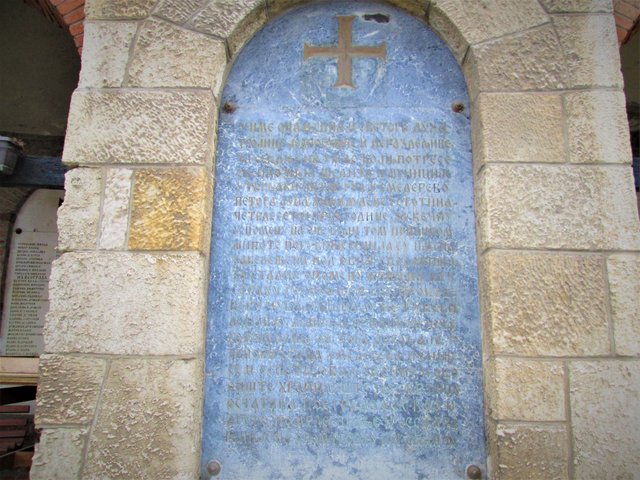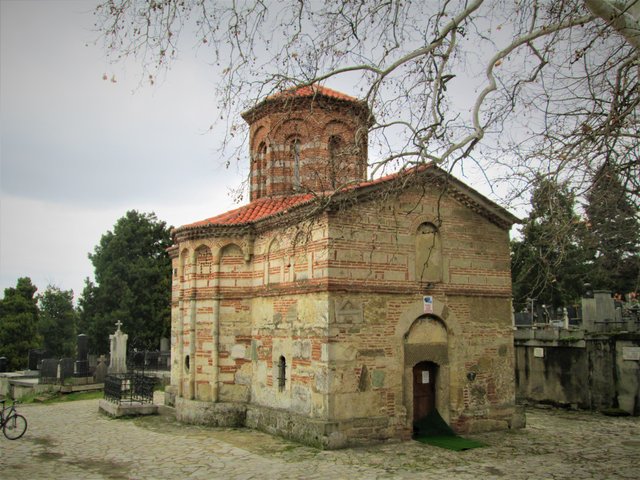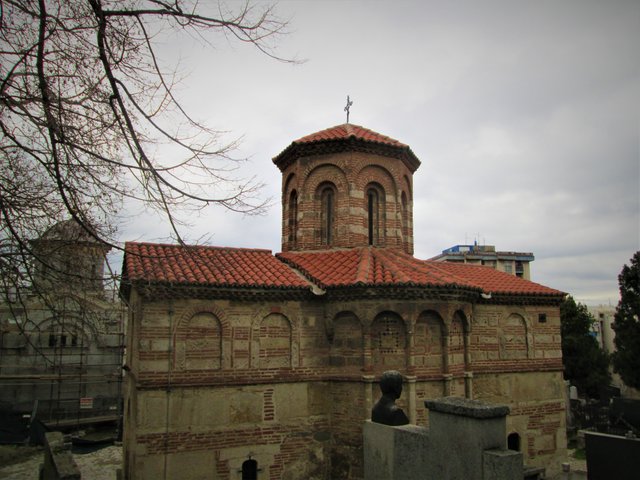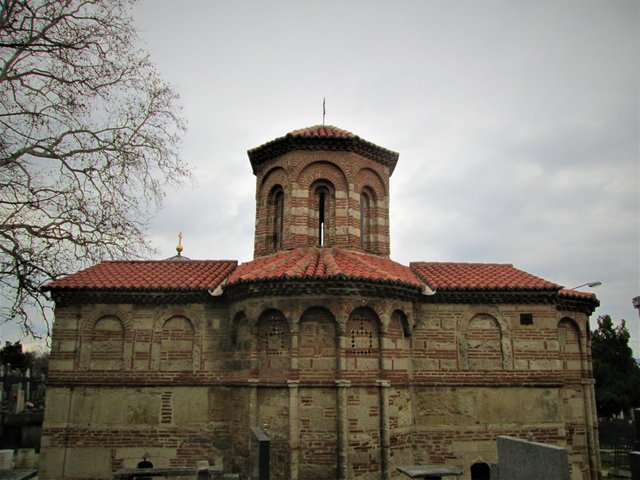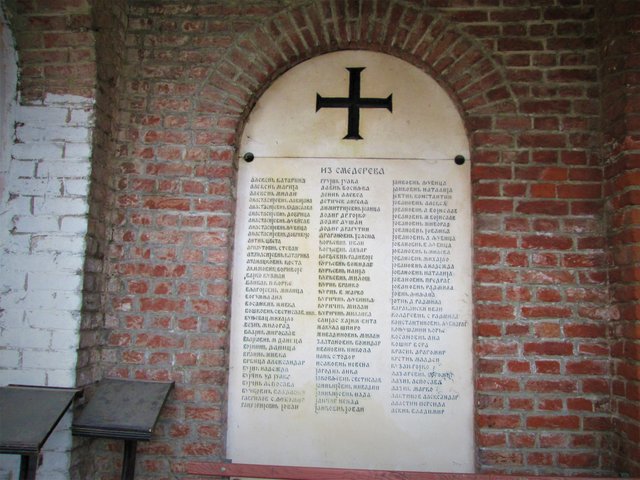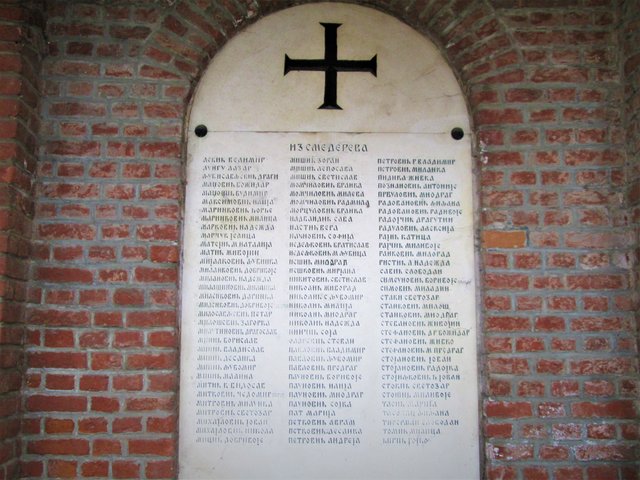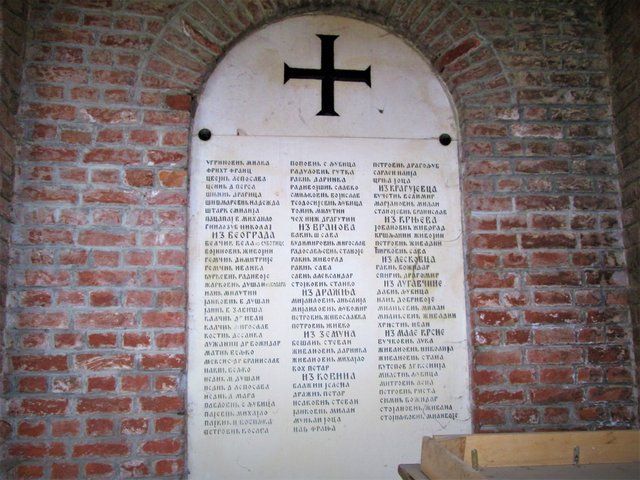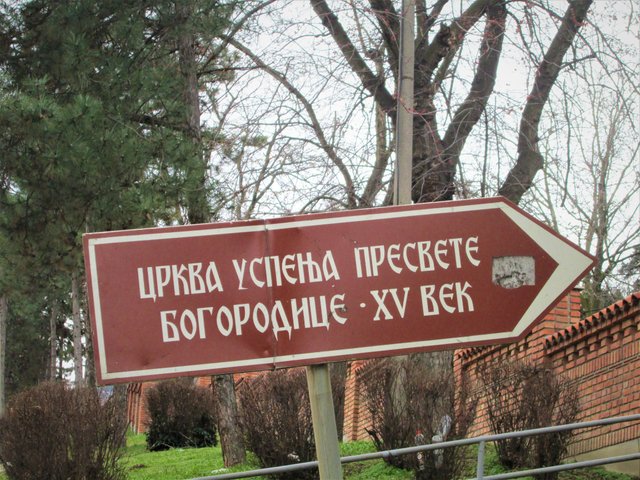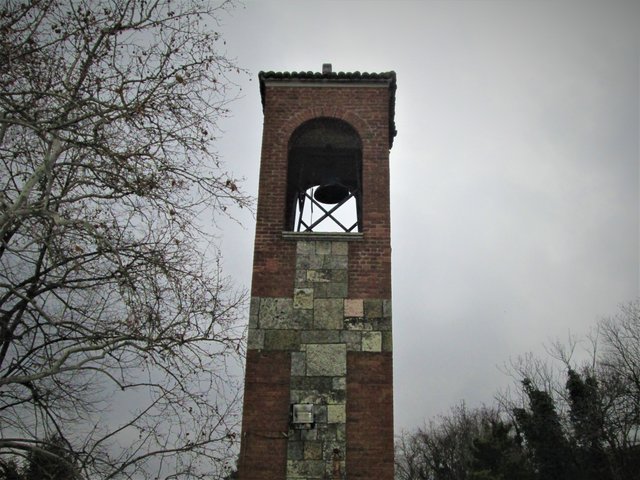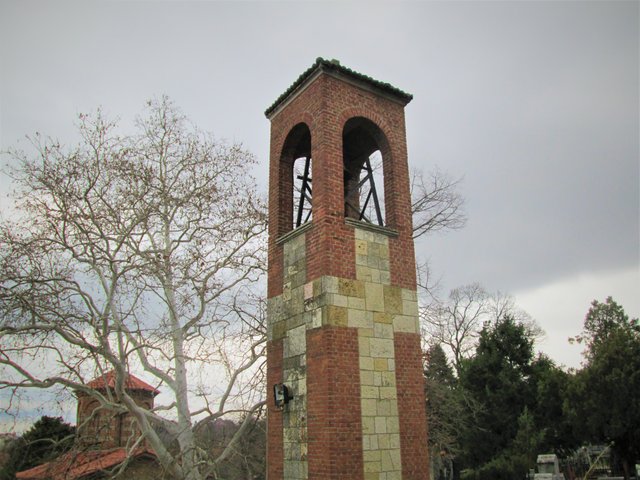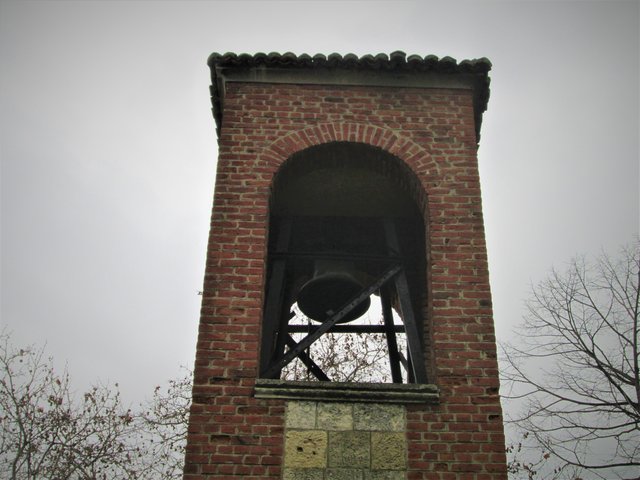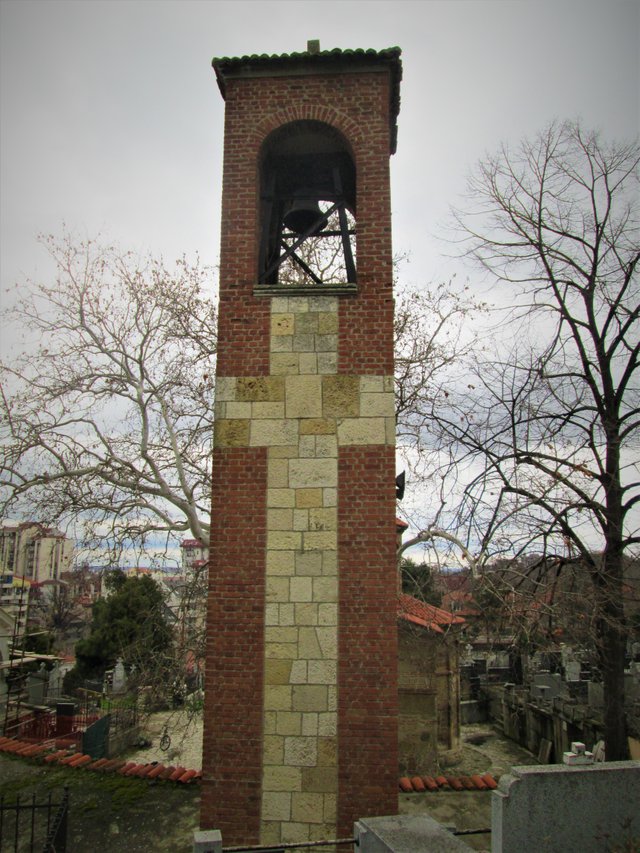Church of the Assumption of the Blessed Virgin #2 - Smederevo
Above Smederevo, for the full two millennia, today the so-called. Karadjordje hill served the cult. There was a pagan temple with the rustic goddess Nika. It was dug up by the Germans after 1921 when they began the renovation of their military cemetery in Smederevo. On that occasion, a part of the vineyard of Luka Likic, a lawyer, was dug. The ground was leveled and the house was first built for the guardian of the cemetery, which was converted in 1957 by academic sculptor Selimir Jovanovic for the needs of his studio. The Germans encountered the foundation of a small, round Roman building about 7 meters in diameter. The foundations were the remnants of a pagan temple long ago demolished.
In the course of the works, the Germans also encountered a rather tall figure, represented by some winged deity, perhaps Apollo or some other mythical figure. The found objects and sculpture of the goddess Nike disappeared during the war and are only mentioned in written documents. Therefore, this is the oldest ancient sacral monument found in Sam Smederevo near the old cemetery church, where, as seen in ancient times, there was a shrine. The architecture of the throne and the entire church building indicate that the building was built of materials that used to belong to other buildings. The floor in the altar and in the chants was made of Roman brick with stamps. The Germans took some of these bricks from Smederevo and paved the paths around the encircled cave in the garden of their embassy.
Smederevo and its surroundings had a strong ecclesiastical organization in the late antique and early Byzantine period. This was confirmed not only by written sources, but also by researches of the Smederevo Fortress, which on the occasion revealed a tricholary church from the XI - XI centuries. In this sense, it could be concluded that the Old Cemetery had a cultic continuity and was built around a Christian martyrium, that is, a cemetral object. Probably the Church of the Assumption of the Blessed Virgin was erected in order to maintain the old cult. It can be assumed that the material for the original church was brought from a nearby Roman shrine. The pagan temple and church in the cemetery initiate the possibility that at the foot of Karadjordjev hill was a settlement even in Roman times. The magnificent view of the Danube makes it possible to see far from here, which was typical of Roman settlements.
In the North Singer of the Church of the Cemetery, in the floor, there are Roman churches with stamps, and there are no medieval jars. So that's where they were originally placed. The pagan temple in the vineyard of Luka Lukic should be linked to these bricks, some of which, while they were not yet baked, had got traces of the fingers of the brickmaker who made them.
One is imprinted with a trace of a dog that passed over them as soon as they were pulled out of the mold. On the western façade of the church is built Medusa with two birds in the corners. Maybe the bricks and this stone are from Viminacium. Judging by the untidy stacking of stone and bricks, as well as the commencement of the window and poles for the altar, the work around the church was done intermittently or quickly built.
The church was built between 1430 and 1456 as a concise trichonos. Her cubes lean against the pilasters. The facades are made of stone and brick with very little cut decoration. The floor of the church is lower than the level of the yard.
The temple is a one-nave three-channel building of slender proportions, surmounted by an elegant octagonal dome and decorated with Moravian school-style facades. The church is one of the most beautiful monuments from the end of Despotovina. Its characteristics generally point to a Moravian school. It was built by alternating use of semi-broken stone and brick. There is a colorful, but not finished, shallow plastic decoration of the Moravian School of Architecture. It is broken down by horizontal wreaths.
Only the church of Smederevo, besides Ravanica from the Moravian school, has a three-pointed cross decorated in the fields of blind arcades. These ancient architectural elements from the terra cotta rhenium were applied in Stari Nagoricin and the Virgin Mary of Levishka. The exception to the cemetery monument is that it does not have a bell tower, which in Moravian school stands above the narthex, such as in Ravanica. From this it could be assumed that the Cemetery Church is much older and that it was repaired in the 14th or early 15th century in the main ruling style. However, the building material used to build the church is identical to the stone and brick used to build the Fortress. These are Roman poles and tombstones from Mons Aureus, Viminacium and Margum. This detail already points to the date when the Fort was erected.
This is more likely than it was created at the time of Despot Stefan when Smederevo might have had a church. The model of the Cemetery Church was placed in the hands of the despot Djurdj in a fresco on Oplenac given together with other Serbian rulers who erected the churches, but this is not proof that the church was erected by Djurdj Brnakovic. It is clear that the Cemetery Church was not a cathedral where citizens of the capital were hiding, as its modest space can accommodate barely 100 people. It would be that in Despotovina times it was only a monastery church. In addition, it was not erected as Brankovic's mausoleum, which means that there must have been another large metropolitan church and a chapel. Despot Djuradj was not buried in it, although it is stated in the Vrdnik Chronicle.
Epigraphic records are of different contents and come from different time periods. Among the oldest in content is an inscription carved above the south window of the nave, which reads "Know when temple 1012 is built." One group of authors believes that this year marks the time when the church was erected, which would mean that the church is one of the oldest buildings in the area.
However, the architecture of the church belongs to a series of buildings characteristic of the 11th century, as the engraved inscription says. This statement is supported by the engraved year 1012 on the lower part of the dress of St. Trifuna. In any case, one must take into account the painting, as well as the fresco mortar on which the famous inscription is engraved that it is not from the XI century, but belongs to the period from the XV to the XVII century.
When it comes to solving this problem, other facts must be taken into account: that the inscription is carved with a sharp object and that the letters are quite uneven, that is, calligraphically intact. The writer of these letters showed a certain incompetence and ignorance of Church Slavonic alphabet. Some letters resemble the Greek alphabet, and the words were used in the Russian review, which corresponds to the seventeenth - eighteenth centuries. In the old Church Slavonic texts, the word to know is very rarely encountered, and in this form with an end in the end it can be said that it is almost gone. Similar situation with verb build up.
The reasons given above clearly indicate that the engraved year 1012 does not signify the year the church was erected in AD. In this connection, it can be assumed that this year carries a mysterious meaning or an era that is not clear to us at the moment, whose value corresponds to the 15th century. Archeological investigations of the Smederevo Fortress give some indications in clarifying this issue, which found three plates with a carved year 1118. The discovered plates were dated to the sixteenth century. Given that the figure carved into the fresco mortar of the Church at the Cemetery has a lower cumulative value of about 106 years, which may correspond to the beginning or half of the 15th century.
This statement initiates another conclusion, that in Smederevo, at the beginning of the sixteenth century, there lived a special group of inhabitants, who came from the East and had their own countable years. The oriental origin of this group is also confirmed by the Oriental motifs on the plates. In addition to the above inscription, there are two other graffiti dating from 1604 to 1698, among which is the inscription which speaks of the visit of Patriarch Arseny. There are a total of 44 inscriptions on the interior of the church.
Out of the total number of 7 inscriptions are undated, 19 are written in Latin, 8 in Greek letters, one in secret letters and the rest in Cyrillic. The oldest inscription mentions the year 1012 already discussed, and the youngest in 1914. The highest inscriptions date from the 17th century, 11 from the 18th, two from the 19th and one from the beginning of the 20th century. The first reliably dated inscription dates from 1604 and mentions the Polish landlord Panlovsky. Of all the inscriptions, the most important inscriptions to us are the mention of the visit of the Patriarch John of Pec from 1643 and Stefan Kovac of 1703.
Joakim Vujic, traveling in Serbia in 1826, noted that the Church in the cemetery was a function of the parish church, not a monastery. In addition, Vujic noted that Smederevo had about 4,000 souls and that the said Church, which it calls "Gornja", was small and that there was a need for more. Such a need was realized by Ljota Dimitrijeic, better known as Ljotic, who came from the area of Bitola to Krnjevo, and about 1860 moved to Smederevo. Immediately upon arriving in Smederevo on the west side of the Church of the Assumption of the Blessed Virgin, he erected a wooden floor. In the immediate vicinity of the Church was the tomb of the founder Lota and his wife, which, for incomprehensible reasons, was removed in 1976.
The cemetery church was rebuilt in 1930 when the wooden mooring was removed. 1941 Repair of damage caused by explosion of ammunition was carried out at Churchyard on 5.6.1941. years. On that occasion, cracks were created which were improperly repaired and damage to the paintings in the northern part of the altar apse occurred.
